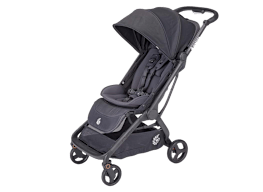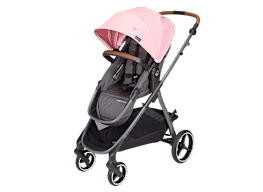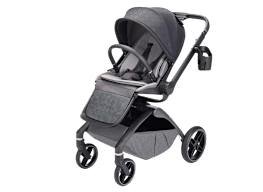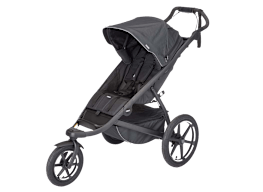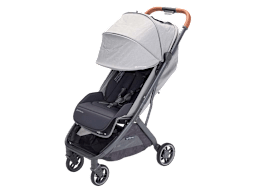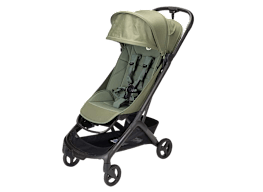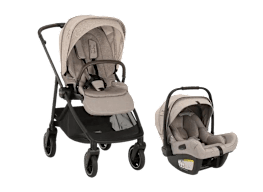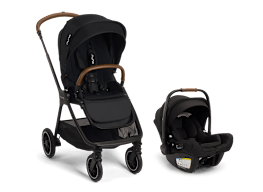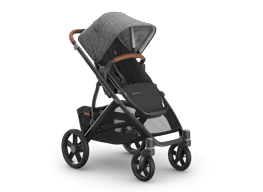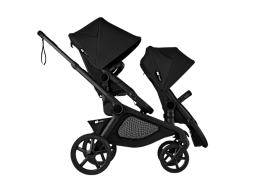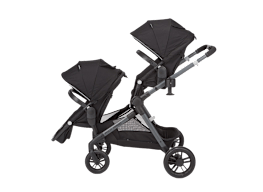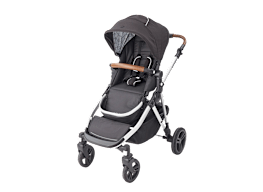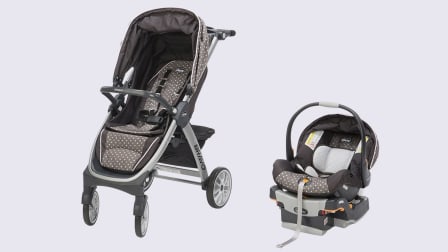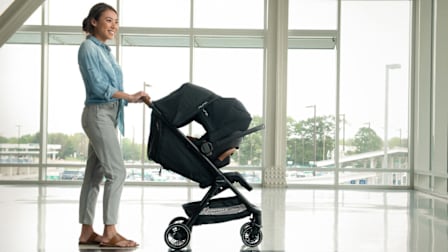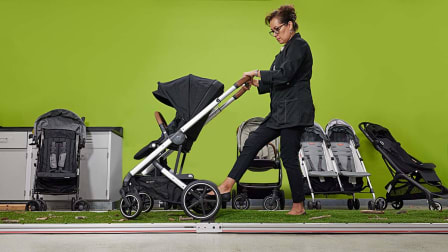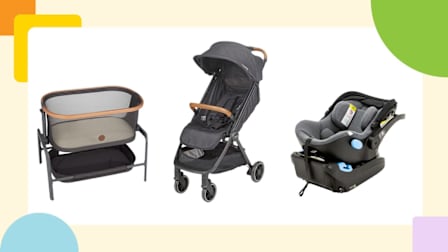Best Stroller Footmuffs
We tested footmuffs from Diono, L.L.Bean, and several other brands for warmth, softness, features, and ease of use
When you shop through retailer links on our site, we may earn affiliate commissions. 100% of the fees we collect are used to support our nonprofit mission. Learn more.
Stroller footmuffs, aka buntings, are like a weather-resistant sleeping bag that attaches to your stroller, keeping your baby or toddler cozy and warm on winter days while you’re out and about. (And yes, you’re allowed to feel a little jealous at the idea of being pushed around in a stroller wrapped up in a snug and toasty cocoon.)
To identify the best stroller footmuffs, José Amézquita, who led CR’s testing, evaluated five popular footmuffs for warmth and features. Several evaluators also ranked them for softness and ease of use. Our testers found that not all stroller footmuffs are created equal: Some are more difficult to attach to the stroller, and others aren’t quite warm enough to be used on their own without a jacket or sweater.




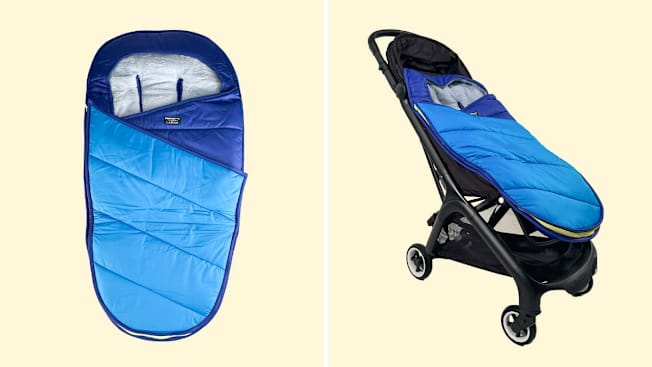
This one was the overall winner for us, no question. The L.L.Bean Snow Bunting was the best for heat insulation and features, and came in second only to the Diono footmuff (below) in terms of softness. It was also considered the easiest to use because its back detaches with fabric fasteners and allows for more flexibility when you’re installing it on a stroller.
We tested the footmuffs for their ability to keep a child dry in rainy weather. While the water-repellent material of the L.L.Bean model held up well, the zipper on its side still allowed some water to trickle through. It’s worth noting, however, that the zipper seepage issue was present in every footmuff we tested.
Lastly, if you like a pop of color, the L.L.Bean comes in vibrant, dual tones—bright sapphire/bold aqua and pink berry/night, which might be a nice antidote to the dreary colors of gray and white in winter.
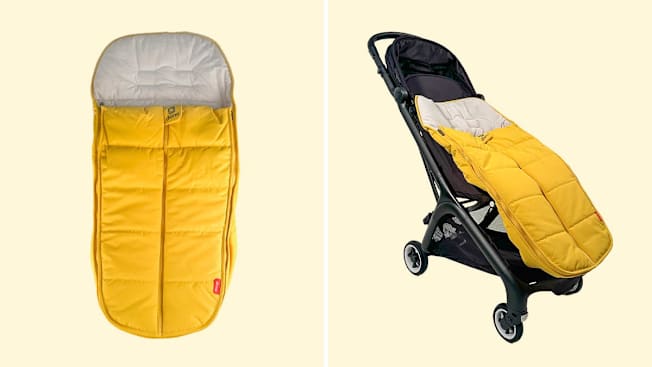
The Diono All Weather Stroller Footmuff came in second in our overall rankings. Its softness was a particular standout, and it was ranked second for its features, though it landed in the middle of the pack for warmth. The Diono is also available in bright colors, including the shades yellow sulfur and blue turquoise, in addition to black midnight.
Unfortunately, water seeped through more easily with the Diono, which has a zipper in the front, than it did with our top choice, the L.L.Bean, which has its zipper to the side. The Diono also had some points taken off because it was one of the trickier footmuffs to set up. To install the footmuff, the stroller’s straps have to be disengaged and then snaked through the holes of the footmuff, which posed difficulty for some.
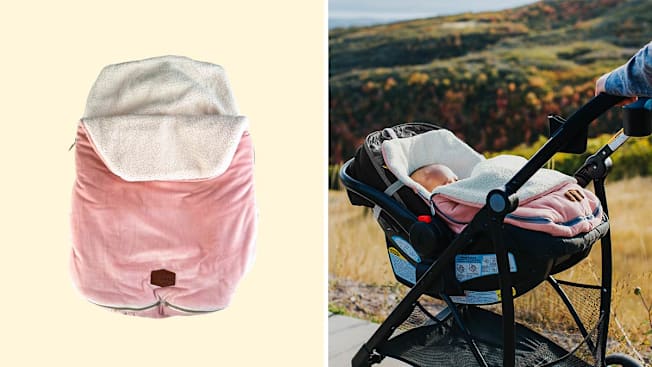
The warmth of the JJ Cole Original Bundle Me was less than average among the footmuffs we tested. This one also ranked last for us on features, specifically its capacity to be used for children of different ages. It’s designed for infants up to 12 months old or up to 30 inches in length. By comparison, both the L.L.Bean Snow Bunting and the Diono All Weather Stroller Footmuff accommodate kids from birth to 6 years old.
If you want a budget-friendly option, however, this might still be a good pick because it’s the cheapest by a long distance. It also ranked decently for softness and ease of use. Its back panel is detachable and can be adjusted with fabric fasteners, which made it relatively easy for our evaluators to install.
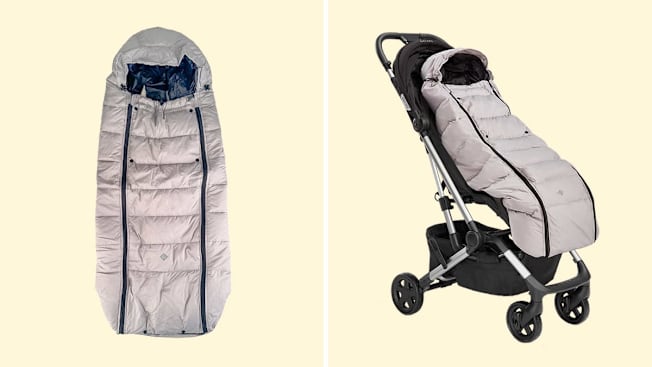
If you live in a place with frigid winters, maybe skip this one. It ranked last in our warmth test, which is never what you want from a product intended to keep your child warm. It also was ranked near the bottom for softness and features.
The Colugo, however, does have a few points in its favor for being “very easy for a newbie to install,” according to one of our evaluators. And if you’re an animal-print lover, perhaps you might also gravitate toward this one because it comes in “wild child,” a design that’s essentially a leopard print. This stroller footmuff is also available in more classic colors like black and cool gray.
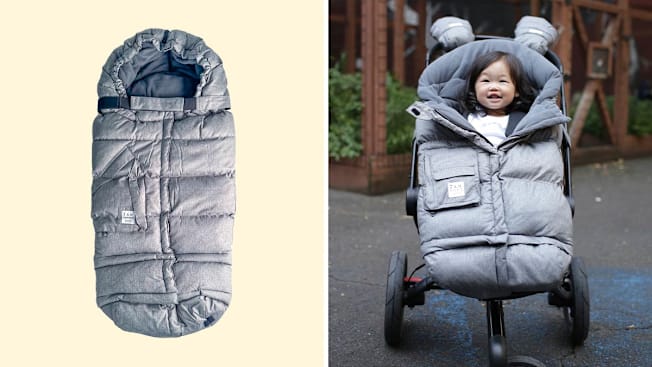
The priciest footmuff we tested, the 7AM Enfant Blanket 212 Evolution came in second in our warmth test. It’s also the only footmuff to offer zippered extensions, which allow it to expand in length and width to grow with your child.
Installing it, however, wasn’t a painless process for our evaluators, and it came in second to last in our ranking for ease of use. Its water-repellent features also left much to be desired. When Amézquita poured water on its outer shell, the water seeped through to the inside of the footmuff. So definitely keep this in mind if you live in a region with rainy winter weather.
Tips on Buying and Using a Footmuff
When you install your footmuff, make sure it fits the stroller properly and that there aren’t any loose straps or buckles that might interfere with the stroller’s functionality. If you’re using the footmuff with an infant or a younger baby, LaBracio says it’s important that the footmuff doesn’t cover their face or obstruct your view of them.
As to what’s the best temperature to start using a footmuff, her recommendation is that it should be around the same time you’re beginning to regularly dress your child in a winter coat. “That exact temperature differs for all families, but it’s usually somewhere around 40° F or so,” she says.
How CR Evaluated Stroller Footmuffs
We purchased five of the most popular stroller footmuffs and evaluated each model based on these four criteria:
Warmth
We looked at each footmuff’s ability to insulate heat. In terms of methodology, we had a 15-inch aluminum tube we call the “tin man” and wrapped it in the footmuff, then placed it in a colder chamber. Inside the tin man was an incandescent lightbulb and a thermostat set at 98.6° F, the average body temperature of a healthy adult.
Every time the internal temperature of the tin man dipped below the set temperature, the lightbulb would switch on to bring it back up to 98.6° F. We then measured how much power was consumed by the lightbulb to maintain the tin man’s temperature. The footmuff that consumed the least amount of power was considered to have the best heat insulation, and the one that consumed the most power had the worst.
Softness
We compared the lining of the footmuffs against each other and ranked them on the softness-feel of the material.
Features
We evaluated the footmuffs on whether they provided features such as a water-repellent outer shell, anti-slip backings that help keep the footmuff in place, length and width extensions, and machine washability. We also considered factors including the age and size of the child it can accommodate and its adaptability to strollers and car seats.
Ease of Use
We assessed how easy it was to install the footmuff on a stroller and how easy it might be to get a baby into and out of the footmuff.
Looking for a Stroller?
Check out the strollers that Consumer Reports recommends.



















